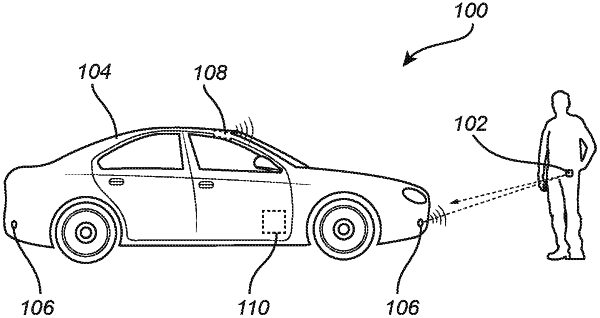| CPC H04W 12/12 (2013.01) [B60R 25/2072 (2013.01); B60R 25/24 (2013.01); F02N 11/0807 (2013.01); G07C 9/00174 (2013.01); G07C 9/00182 (2013.01); G07C 9/00309 (2013.01); H04L 63/1466 (2013.01); H04W 12/08 (2013.01); H04W 12/082 (2021.01); G07C 2009/00261 (2013.01); G07C 2009/00555 (2013.01); G07C 2009/00769 (2013.01); G07C 2009/00801 (2013.01); G07C 2209/63 (2013.01)] | 21 Claims |

|
1. A method, comprising:
establishing a secure communication channel between a vehicle and a user device;
transmitting an acoustic signal comprising a first unique identity from a vehicle acoustic transducer and creating a first time stamp;
in the vehicle, receiving at least one reflected acoustic signal and creating a second time stamp upon reception, and, for the at least one reflected acoustic signal, determining a first time-of-flight;
in the user device, receiving and verifying the first unique identity transmitted by the vehicle and creating a third time stamp upon reception, generating a response signal using a previously agreed upon method for creating a second unique identity based on the received first unique identity, transmitting the response signal as an acoustic signal comprising the second unique identity and creating a fourth time stamp for the transmission event, determining a response delay time, and transmitting a radio frequency (RF) signal comprising the response delay time to the vehicle over the secure communication channel;
in the vehicle, receiving the response signal, verifying the second unique identity and creating a fifth time stamp, receiving the RF signal comprising the response delay time, and determining a second time-of-flight; and
when a difference between the first time-of-flight and the second time-of-flight is below a predetermined threshold value, authorizing the user device to send a request to the vehicle.
|